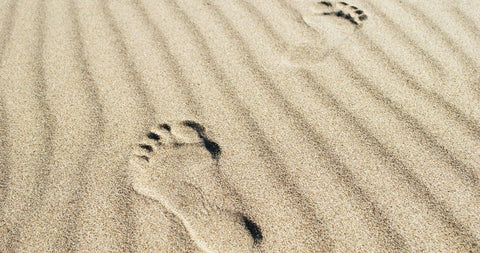
Understand and Manage: Cracked Heels
The constant pressure of pounding your feet on the ground when you walk or run can cause dry and cracked skin. Although it can be tempting to live your life wearing flip flops or walking around barefoot, the constant exposure to the air can only exacerbate the effects of the air to the skin on your feet.
This is not a diagnostic tool. This healthcare professional does not endorse Scholl products and were paid by the makers of Scholl for their time producing this video
The HCP does not endorse any medicine products or brands.
What are cracked heels?
Also called fissures, cracks around the heels can look unpleasant. As hard, dry skin builds up on the heel, the epidermis can crack, in some severe cases the cracks can bleed and become infected.
What causes cracked heels?
Cracked heels often begin as dry skin at the back of the heels. In more severe advanced cases the cracks can split open and develop into crevices that can bleed. Sometimes very deep wounds can become infected. Anyone experiencing bleeding or infection should contact their healthcare professional.
Are there any genetic or lifestyle factors that play a part in this condition?
Dry skin on the heels often appears when the skin rubs against shoes causing calluses to form, or from exposure of feet to relatively high environmental temperatures, for example during the summer. When this happens the epidermis around the heel loses its moisture making it less flexible and making it more prone to cracking when walking.
Older people, people with diabetes and those who spend long hours on their feet are particularly prone to cracked heels as they place more pressure on their feet.
Using soaps and detergents with harsh chemicals and spending a lot a time in dry environments (with air conditioning or central heating) can also play a significant role in cracked heels.
When should I seek medical advice?
Though it’s usually simple to treat dry, cracked heels at home using a pumice or foot file in the bath or shower, followed by moisturising cream, people with diabetes should seek further advice from a local podiatrist before self-treating.
If you don’t see an improvement after a few days, if the problem gets worse, begins to bleed or you suspect it is infected, or you have difficulty putting weight on your foot it is important to speak to a healthcare professional.
Tips for protecting against and managing cracked heels
You can help get relief at home by trying the following:
- Wearing well-fitted, supportive shoes. Avoid wearing flip flops or going barefoot as constant exposure to the air encourages dry skin.
- Buffing away any dead skin in the shower or bath with a pumice or specialist foot file.
- Applying a rich moisturising cream to feet before bed. Slip on a pair of cotton socks afterwards to encourage the lotion to sink into your skin.
All information presented on these web pages is not meant to diagnose or prescribe. In all health care matters, please contact your healthcare professional.
To explore related products, click here.
UK/SC/0319/0049c

